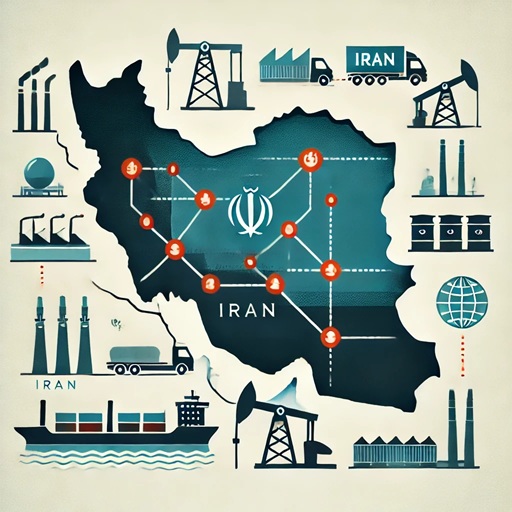International freight and forwarding play a pivotal role in the global economy, connecting businesses and consumers across continents. As the backbone of international trade, this sector ensures goods are transported efficiently, safely, and within stipulated timelines. This article delves into the nuances of international freight and forwarding, exploring its importance, processes, challenges, and trends.
- Understanding Freight and Forwarding
What Is Freight?
Freight refers to the goods or commodities transported from one location to another, typically in bulk, via various modes such as air, sea, rail, or road. Depending on the nature of the goods, they may be categorized as general cargo (e.g., electronics, textiles) or specialized cargo (e.g., perishable goods, hazardous materials).
What Is Forwarding?
Forwarding, often referred to as freight forwarding, involves organizing and coordinating the shipment of goods on behalf of shippers. Freight forwarders act as intermediaries, managing logistics, documentation, customs clearance, and sometimes even storage. They provide end-to-end solutions tailored to the needs of businesses and individuals.
- Importance of International Freight and Forwarding
Four major characteristics of international freight and forwarding are:
- Facilitating Global Trade
International freight and forwarding are essential for the seamless movement of goods across borders, supporting industries such as manufacturing, retail, and agriculture. - Economic Growth
Efficient freight services reduce transportation costs, making products more affordable and fostering economic growth. - Supply Chain Optimization
Freight forwarders help businesses optimize supply chains by leveraging their expertise in routing, documentation, and compliance. - Access to Global Markets
Through established networks, freight forwarders enable even small businesses to access international markets.
Here we will briefly review each of these factors. A more complete study of each of them would require a separate, dedicated article.
- Modes of Transportation
The types of transportation methods and the advantages and challenges facing each method are as follows:
- Air Freight
- Advantages: Fast, reliable, suitable for high-value or time-sensitive goods.
- Challenges: Expensive, limited capacity.
- Sea Freight
- Advantages: Cost-effective for large volumes, accommodates a wide range of cargo types.
- Challenges: Slower, subject to weather disruptions.
- Rail Freight
- Advantages: Environmentally friendly, suitable for long distances within continents.
- Challenges: Limited to regions with established rail networks.
- Road Freight
- Advantages: Flexible, ideal for last-mile delivery.
- Challenges: Traffic congestion, regulatory constraints across borders.
- The Freight Forwarding Process
- Planning and Coordination
Freight forwarders assess the client’s needs, select appropriate transportation modes, and devise the most efficient routes. - Documentation
- Key documents include the bill of lading, commercial invoice, packing list, and certificate of origin.
- Compliance with international trade regulations is paramount.
- Customs Clearance
Forwarders manage customs declarations, duties, and inspections, ensuring goods meet regulatory standards. - Cargo Handling and Transportation
This involves loading, unloading, and transshipment across various transport modes. - Tracking and Communication
Advanced tracking technologies provide real-time updates, enhancing transparency and customer satisfaction.
- Challenges in International Freight and Forwarding
- Regulatory Compliance
- Navigating complex customs regulations and tariffs is a significant challenge.
- Non-compliance can result in delays, penalties, or confiscation of goods.
- Rising Costs
- Fluctuations in fuel prices, labor shortages, and port congestion increase operational costs.
- Supply Chain Disruptions
- Natural disasters, geopolitical tensions, and pandemics (e.g., COVID-19) can disrupt freight operations.
- Technological Integration
- While technology streamlines operations, the cost of adopting and maintaining sophisticated systems can be high.
- Trends Shaping the Industry
- Digital Transformation
- Adoption of AI, blockchain, and IoT is revolutionizing logistics by enhancing efficiency and transparency.
- Sustainability Initiatives
- Efforts to reduce carbon emissions are driving investments in greener technologies and alternative fuels.
- E-Commerce Growth
- The rise of online shopping has increased demand for efficient international freight solutions, particularly for small packages.
- Reshoring and Nearshoring
- Companies are re-evaluating supply chains to reduce dependence on distant markets, impacting freight patterns.
- Conclusion
International freight and forwarding are indispensable components of the modern globalized economy. They connect nations, fuel industries, and drive innovation in logistics. However, the sector faces challenges such as regulatory complexities, rising costs, and environmental concerns. By embracing digitalization, sustainability, and agile practices, freight forwarders can navigate these challenges and continue to support global trade effectively.
As the world becomes increasingly interconnected, the role of international freight and forwarding will remain crucial, ensuring goods reach their destinations efficiently while adapting to the ever-evolving demands of global commerce.
This overview offers a snapshot of the dynamic world of international freight and forwarding, serving as a useful guide for businesses, professionals, and individuals navigating this critical sector.
For more comprehensive and specialized information, follow other articles in the SelltoIran.com freight and forwarding articles column.














